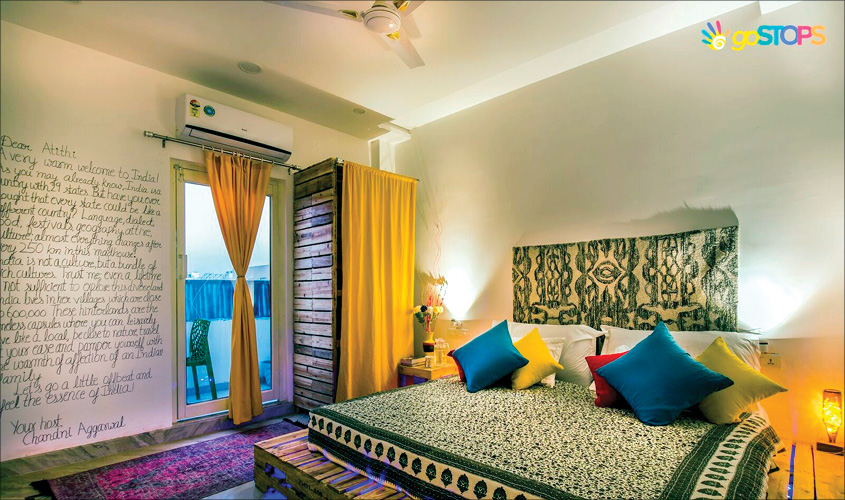Tourism is one of the sectors which is growing rapidly. The Indian travel industry has experienced significant growth due to rapid turnaround in the economy, increased movement among domestic travellers and growing demand from emerging markets. The travel and tourism industry as a whole is a significant contributor to overall GDP of the country. With the government investing heavily in the travel sector in recent years, this contribution is only set to go higher in the upcoming years.
According to World Travel and Tourism Council (WTTC), in 2018, India ranked third amongst 185 countries in terms of travel and tourism’s total contribution to GDP. Today, the total contribution by travel and tourism sector is expected to increase from Rs. 15,24,000 crore in 2017 to Rs. 32,05,000 crore in 2028. Total earning from the sector in India stood at $28.6 billion in 2018 and is targeted to reach $50 billion by 2022.
The main reason of this growth of Indian travel market is affordability, countless choices in airlines and increased company budgets. Now, it has become a popular trend to extend business trips by adding a few more days for sightseeing, shopping , experiencing the local cuisines, etc. The use of technology has helped simplify customer-centric business to a great extent. With the adoption of various digital platforms, the dynamics of the travel industry has undergone a sea change. Many companies have introduced their mobile apps for providing better services to their loyal customers. Mobile apps help create personal and immediate engagement with guests chiefly comprising of millennials who are familiar with the interface and want instant information on online platforms. The penetration of online booking in travel market will increase to an extent that within a period of three years from now, one in three bookings for hotel accommodation will be done online. 57 percent of the travelers find better deals and discounts on online platforms against 12 percent of the travelers who still prefer offline sources.
According to the World Economic Forum, two-thirds of the country’s population fall under 35 years. 370 million people fall into the age group of 20-30, of which 170 million population is urban population. Even if 10% of the Indian population is considered, that accounts for 17 million urbanised young Indians who travel regularly. This data then becomes a clear testament to the fact that there is no better time to enter the youth travel market than now.
By 2020, 1 in every 4 travellers will be in age of 20-34 years old. These travelers want affordable budget, high lifestyle aspirations and quality assurance. To support this, many new and alternative accommodation concepts like hostels, boutique hotels, service apartments and home stays are emerging in large numbers across the country. In smaller cities as well as metros youngsters often take 2-4 days short trips to weekend getaway to rejuvenate and get refreshed from their daily life & work pressures. For this segment which has high lifestyle aspirations and shoestring budget, hostels provide the perfect shelter. Hostels are actually, the most popular alternate accommodation segment.
From planning exhilarating trips to offbeat places of majestic natural beauty, to signing up for unique adventure sports, young Indian travellers no longer shy away from venturing into the unexplored and unknown destinations. According to an industry source, out of 8,80,000 travelers looking for accommodation, over 1,40,000 prefer to stay in hostels.
Other factors contributing to this growth is the rise in numbers of domestic travelers and growing numbers of foreign tourists. Lately many small towns and cities of the country have been acknowledged by the hospitality industry for their tremendous potential for tourism. Some of these cities are Rishikesh, Bir, Palampur, Udaipur, etc.
According to the Indian Tourism Survey (2019), the Foreign Tourist Arrival in India has been increasing steadily by roughly 5% every year and is predicted to only increase in the future. Since the hospitality industry has jumped on to the digital and social media platforms, the dynamics of the industry have undergone a sea change. Online Travel will make up 43% of the total travel market in India by 2021. Many companies have their own mobile applications for customers. The use of technology has helped simplify customer-centric business and has helped create an immediate and personal engagement with guests, who mostly comprise of millennials.
Travel market has also created many job opportunity for the professionals. A survey done by Indian Brand Equity Foundation suggests that, 4.2 crore jobs were created in the tourism sector in India in 2019, which was a whopping 8.1 per cent of total employment in the country. There are however, many challenges that need to be addressed –poor infrastructure and inadequate connectivity in terms of road, rail and air are still the hindrances prevailing in many regions of the country, in parallel to overall phenomenal growth. But with time, growth is inevitable.

